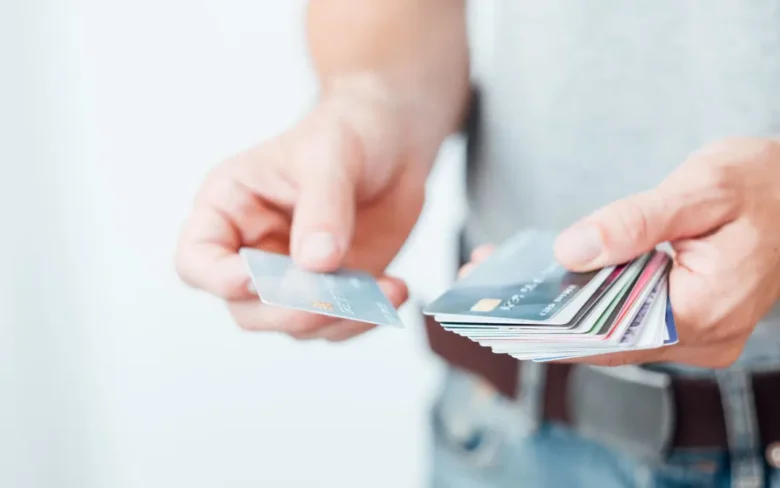It can be overwhelming to have credit card debt, especially if you are worried about your credit score. You can manage your debt without damaging your creditworthiness. You can reduce your debt while improving or maintaining your credit rating.
Credit card debt management requires careful balancing between paying off balances and maintaining the factors that contribute towards a healthy score. Credit rating is influenced by your payment history, credit usage ratio, and account age. Understanding these factors and using smart debt management techniques will help you achieve financial freedom without sacrificing your credit rating.
This guide will show you how to reduce credit card debt and keep your credit score intact. You’ll discover budgeting strategies and negotiation techniques that will help you address your immediate debt problems as well as long-term financial stability.
Understanding Credit Card Debt
When you carry a balance from month to month, interest charges accumulate over time. Credit cards have variable interest rates, which can range between 15% and 25%, making it costly to keep balances.
Credit utilization accounts for 30% of your credit score, while payment history makes up 35%. Credit utilization is the percentage of credit available that you are using on all your cards. This ratio should be kept below 30% and, even better, under 10% to achieve optimal credit scores.
Effective debt management requires that you understand the minimum payment trap. Most credit card companies require a minimum payment of between 2% and 3% of the balance. Making minimum payments will keep your account in good order, but the majority of this payment is used to pay interest instead of reducing your principal balance. You could pay for years without seeing any progress in the debt.
Create a Budget
A detailed budget is the basis for successful debt management. Calculate your monthly income, and then list all expenses, including both fixed costs such as rent and utilities and variable expenses like groceries and entertainment.
You can then identify where you could make savings to help you pay off your debt. You may need to reduce your dining out expenses, cancel subscriptions that are no longer needed, or find more affordable alternatives to regular expenses. Even small amounts of savings can be redirected to debt repayments.
Finding the balance between paying off debt and living within your budget is key. It’s not necessary to cut back on all discretionary expenses, but you should be more intentional with your spending. This will allow you to allocate more money toward debt reduction and maintain a lifestyle you can sustain over the long term.
Prioritizing Debt Repayment
You need to use a strategy to decide which debts you should tackle first when dealing with multiple cards. The debt avalanche method and the debt snowball approach are two popular approaches. Each has distinct advantages depending upon your personality and financial status.
The debt avalanche technique focuses on paying the minimum amount on each card while sending extra payments to the card with the highest interest rate. This method saves you the most in interest over time and will get you out of debt quicker from a mathematical standpoint.
Debt snowball involves paying the minimum on all cards and adding extra money to the card with the lowest balance. This method may be more expensive in terms of interest, but it can provide a psychological boost by eliminating entire balances.
Negotiating with Creditors
Most people are unaware that credit card companies will often work with clients who are in financial difficulty. Communication with your creditors early on can result in modified payment plans that will help you manage your debts without defaulting.
Before you miss a payment, contact your credit card company to ask about hardship programs and payment plans. Many credit card companies offer customers who are experiencing genuine financial difficulties temporary reductions in rates of interest, waived fees, or extended payment plans. These arrangements are usually more advantageous than what would happen if you stopped paying.
Be honest and prepared with specific proposals when you negotiate. You might, for example, ask for a temporary decrease in your interest rate. Or you could request a payment plan, which spreads out your balance over a longer time period. You should document any agreements and ensure that you fully understand them, including the possible impact on your credit rating.
Use of Balance Transfers
When used correctly, balance transfer credit cards are powerful tools in debt management. These cards have promotional periods that offer low or no interest rates for transferred balances. These typically last 12 to 21 months. You can focus on paying off the principal and not worry about additional interest charges.
Calculate the total cost of a transfer, including the transfer fee, which is typically between 3% and 5%. Comparing this amount to the interest you would pay on your existing cards will help you determine if you are saving money.
Balance transfers aren’t a magical solution. It will take discipline to not add new debts to your original credit cards as you pay off the transferred debt. You can remove the original cards or close some accounts after they are paid off. However, closing accounts may affect your credit utilization ratio.
Avoiding Common Pitfalls
Closing accounts after they have been paid off is one of the most common mistakes made by people when it comes to managing credit card debt. Closing credit cards may seem logical. However, it can reduce your available credit and increase your credit utilization rate, which could lower your credit score.
Consider keeping your accounts open, but remove them from your wallet. This will help you avoid temptation. This will maintain your credit limit while preventing any new purchases. Close newer accounts before closing older ones if you have to close a certain account because of annual fees or another concern. This will preserve the length of your credit history.
A common mistake is to use credit cards or cash advances for transactions that are similar to cash, such as purchasing money orders or cryptocurrency. These transactions are usually associated with higher interest rates and immediate interest charges without a grace period. They can also add additional fees to your debt.
Take Control of Your Financial Situation
To manage credit card debt and protect your credit score, you need patience, discipline, strategic planning, and a lot of discipline. This guide provides a roadmap to reduce your debt without damaging your creditworthiness. However, success depends on how committed you are to changing your spending habits and adhering to your repayment plan.
Remind yourself that improving your finances is not a race, but a marathon. Instead of focusing on quick fixes, which could lead to bigger problems in the future, focus on making steady progress. Monitor your credit score to see how your efforts are paying off. Stay motivated as you follow these strategies.
FAQs
1. Can paying off my credit card debt affect my credit score?
Paying off your credit card debt does not improve your credit score. Instead, it reduces your credit utilization rate. Avoid closing the accounts once you have paid them off, as this will negatively affect your credit score.
2. How soon can you expect to see a credit score improvement after paying off debt?
Credit bureaus report monthly updates on credit card usage, so you may notice improvements in your score after reducing credit card debts.
3. Which credit card should I pay first?
Your preference is important. Debt snowball (paying the smallest balance first), on the other hand, provides a psychological boost.
4. Can you negotiate your credit card interest rate?
Many credit card companies do reduce interest rates for customers who are in good standing. This is especially true if they mention other companies that offer lower rates or if the customer expresses financial hardship.
5. Does it make sense to pay multiple times per month with a credit card?
Multiple payments can reduce your credit utilization rate and interest charges, as interest is calculated on your daily account balance.
What happens if I cannot make the minimum payment on my credit card?
Before missing a payment, contact your credit card provider to discuss hardship programs and payment arrangements. Late payments can negatively impact your credit rating.




